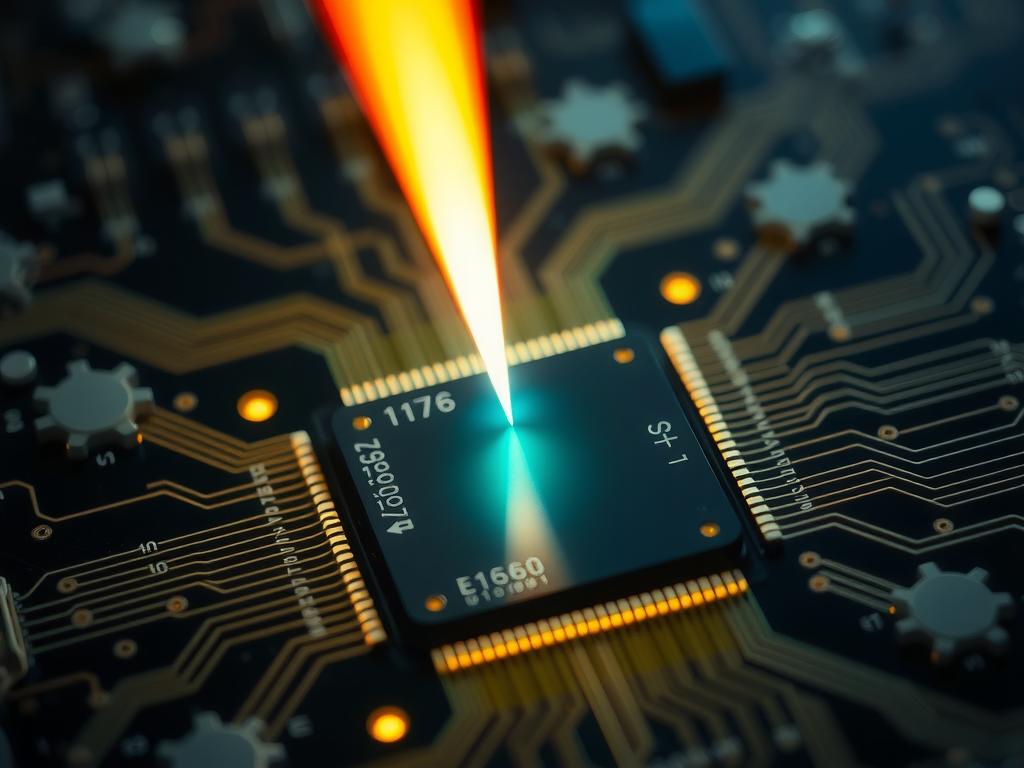A brief introduction to the evolving landscape of semiconductor technology and the increasing importance of light beyond traditional lithography.
The Dawn of Photonic Integration: Merging Light and Electronics
The integration of photonics into semiconductor chips is heralding a new era of data processing speed and energy efficiency. By combining optical and electronic components within a single platform, photonic integration significantly accelerates data transfer rates while drastically reducing power consumption. In data centers and high-performance computing environments, this convergence is crucial, as it tackles the bottleneck issues faced by traditional electronic systems. Notably, the use of optical interconnects diminishes latency and enhances bandwidth, enabling real-time data analysis and processing. This innovation is pivotal for supporting the explosive growth of data-driven applications. As companies adopt photonic-integrated chips, they not only optimize operational performance but also pave the way for sustainable computing solutions in an increasingly energy-conscious world.
Beyond Lithography: Light in Advanced Semiconductor Manufacturing
Innovative uses of light in semiconductor manufacturing are reshaping the landscape of chip production by enhancing precision and efficiency beyond traditional lithography. Advanced metrology techniques, employing optical measurement and reflectometry, allow for real-time monitoring of critical dimensions and thin film analysis during fabrication. Utilizing WLRS technology, manufacturers can achieve unprecedented accuracy, leading to reliable circuits while minimizing material waste.
Additionally, laser annealing is revolutionizing the thermal budget management of semiconductor devices, facilitating rapid and uniform heating processes that optimize the electrical properties of materials. Direct-write processes, leveraging focused laser beams, are enabling precise patterning techniques that further expand the capabilities of cleanroom automation for more complex designs. This convergence of photonics with semiconductor technology not only pushes boundaries but lays the groundwork for future advancements. For more insights, explore Reflectonix and check our products to see how we are leading these innovations. For inquiries, please contact us.
Quantum Light and Future Horizons: The Role of Photons in Next-Gen Computing
Photons serve as the backbone of quantum computing and communication, with their unique properties enabling groundbreaking advancements. *Quantum entanglement* allows particles to become interlinked regardless of distance, leading to secure data transmission that is impervious to eavesdropping. This property is being harnessed to develop robust encryption protocols that surpass traditional methods. Photonic systems also facilitate the emergence of new computing paradigms, such as quantum algorithms that utilize superposition to process information at unprecedented speeds.
Furthermore, advanced *optical measurement* techniques, including those leveraged by Reflectonix, have achieved enhanced precision in semiconductor metrology. Through *thin film analysis* and *reflectometry*, researchers are optimizing the paths photons take, significantly refining the performance of quantum devices. This evolution in light-utilization underscores the significance of the *WLRS technology* in paving the way for next-gen computing and secure communications. For more information, visit About Reflectonix or check out Our Products.
Conclusions
A summary of the key innovations presented and a forward-looking perspective on how light will continue to shape the future of semiconductor technology, potentially mentioning its impact on various industries.

